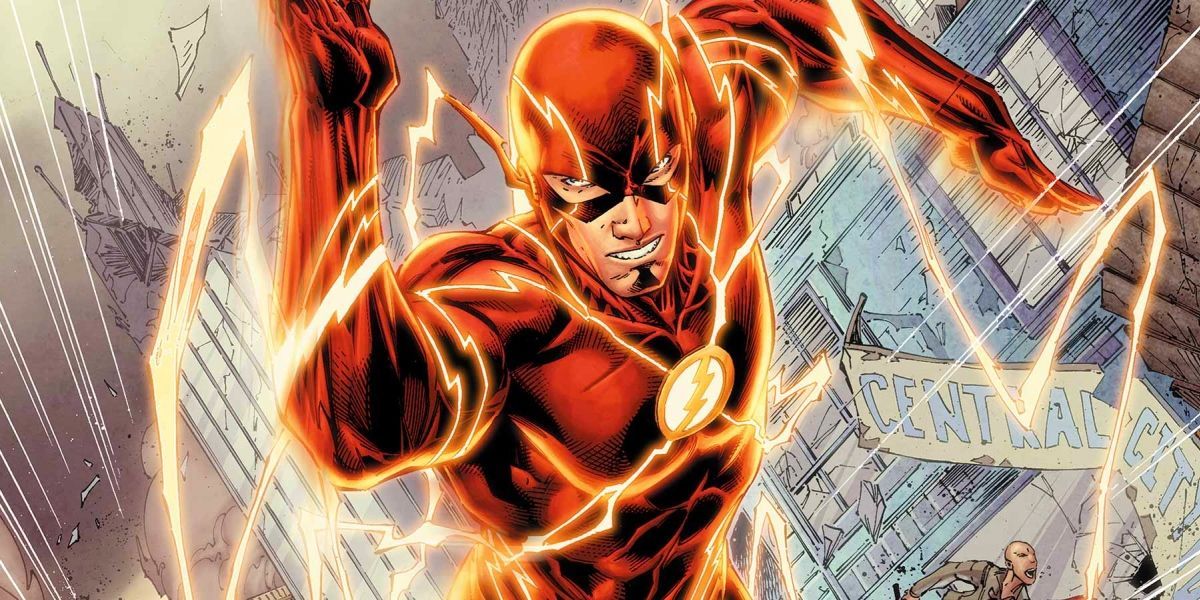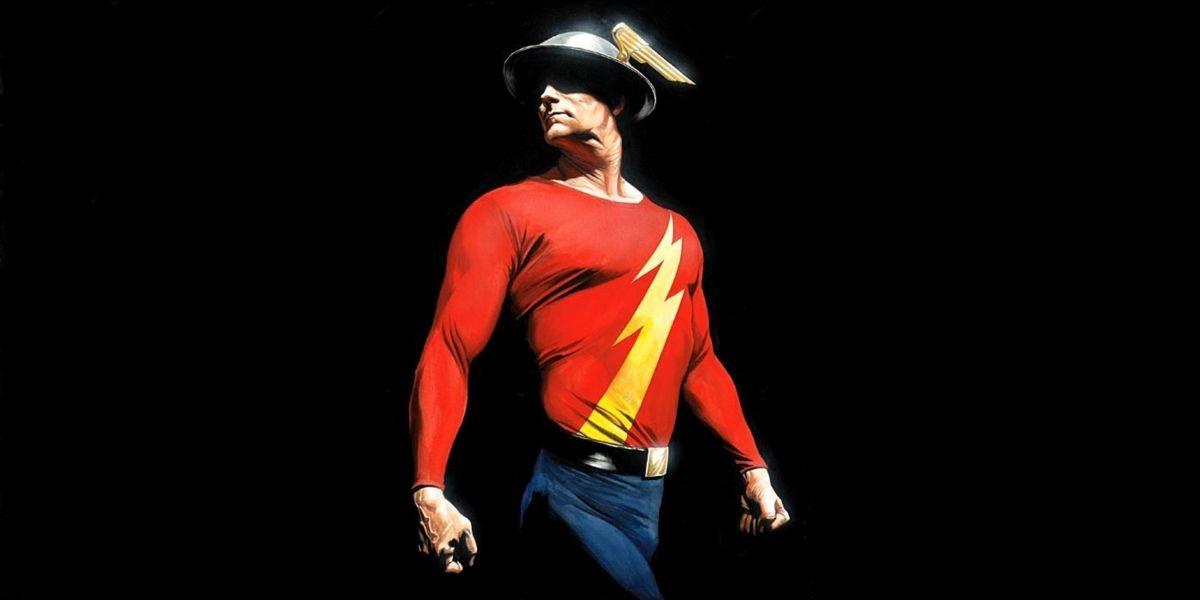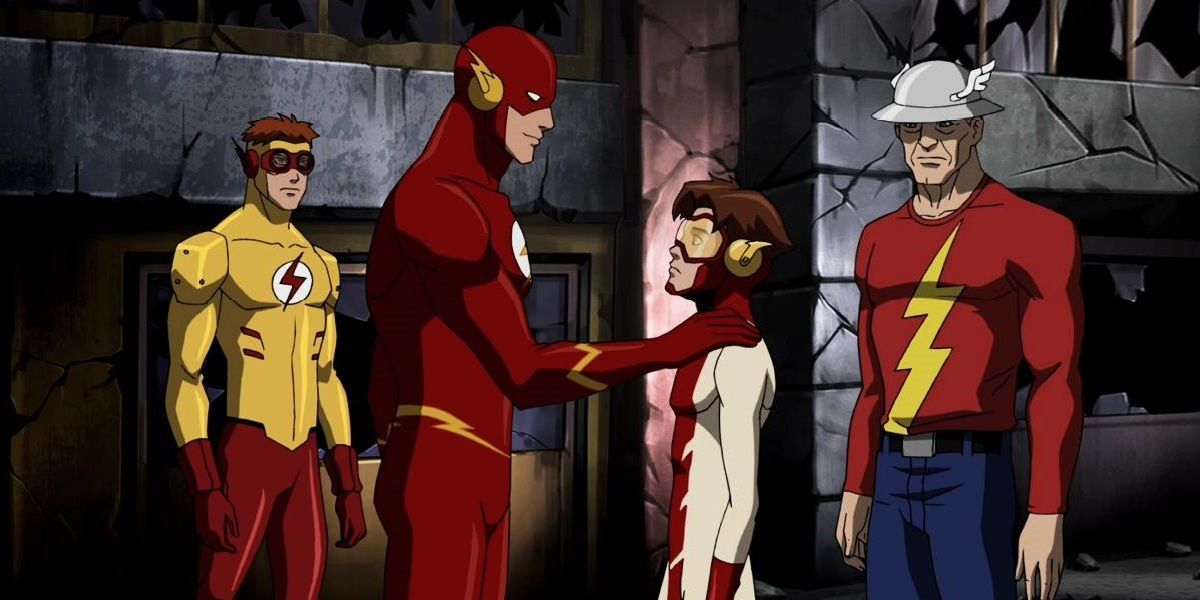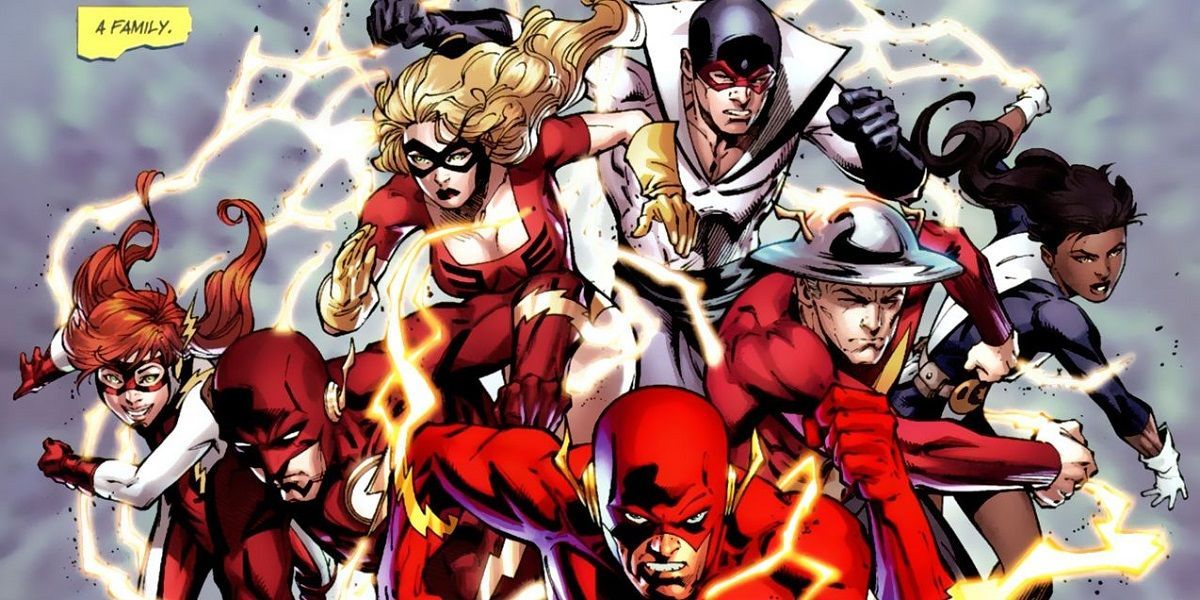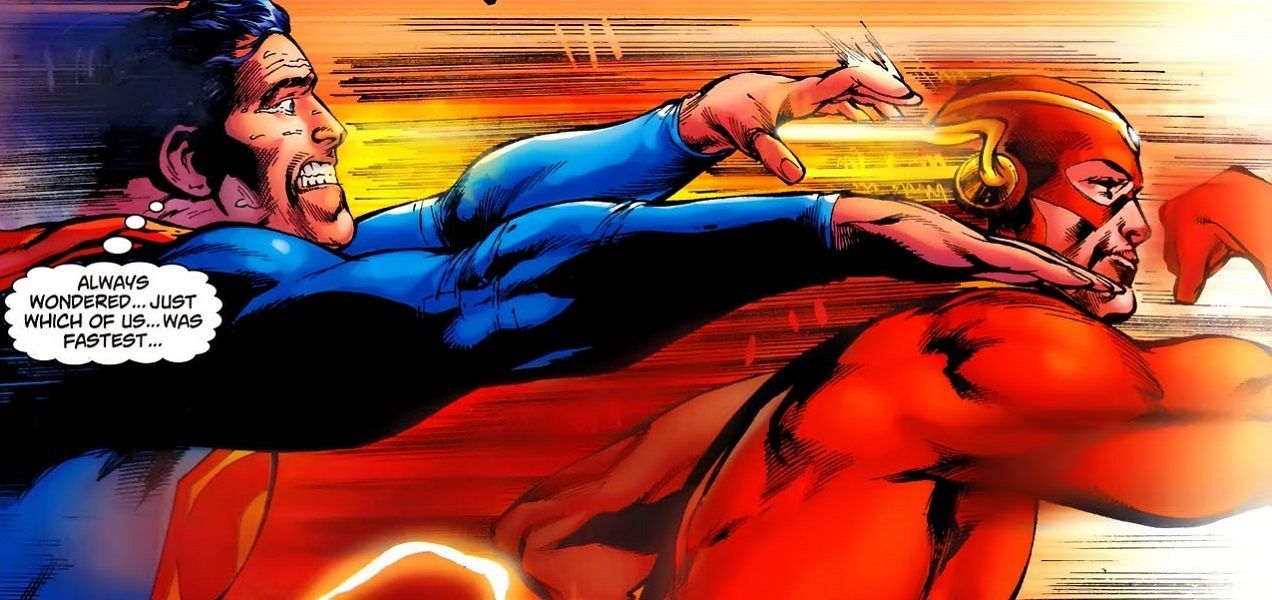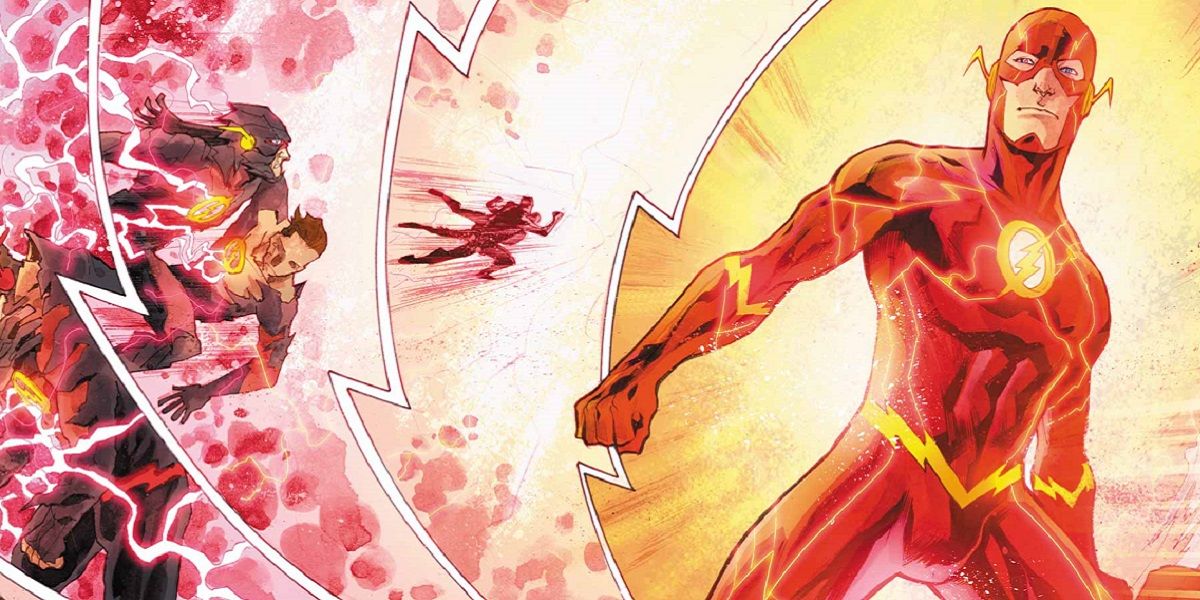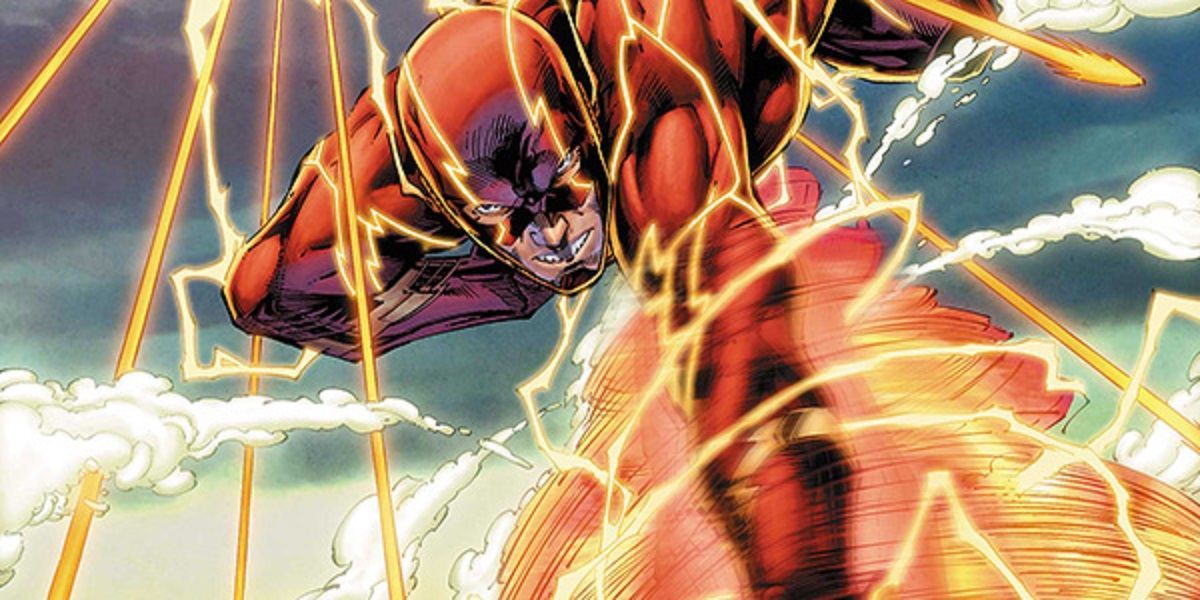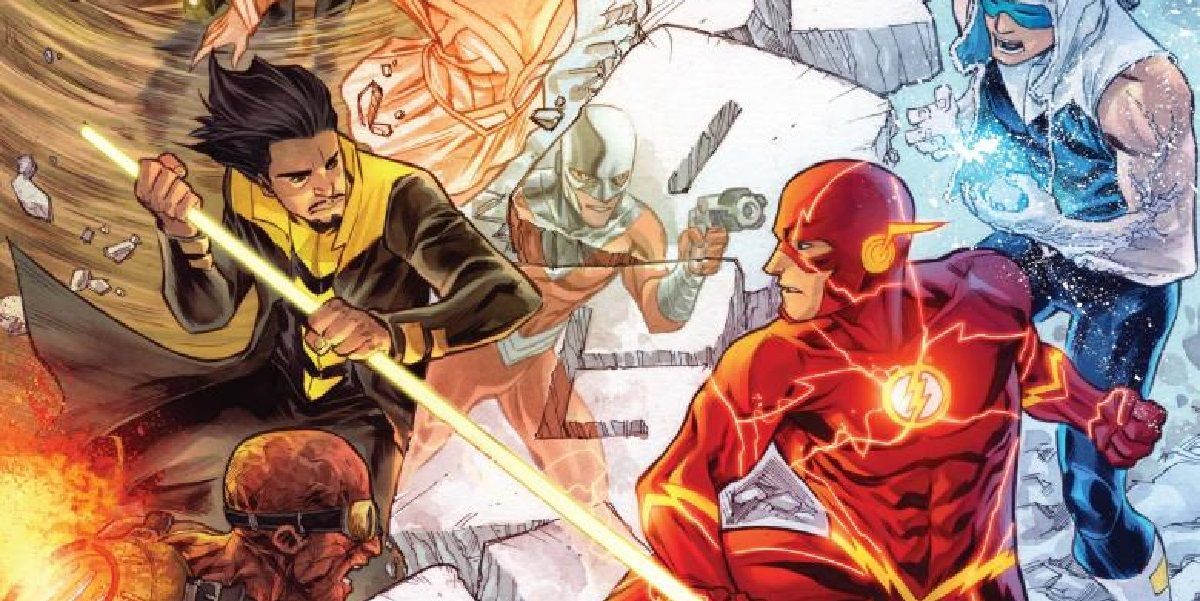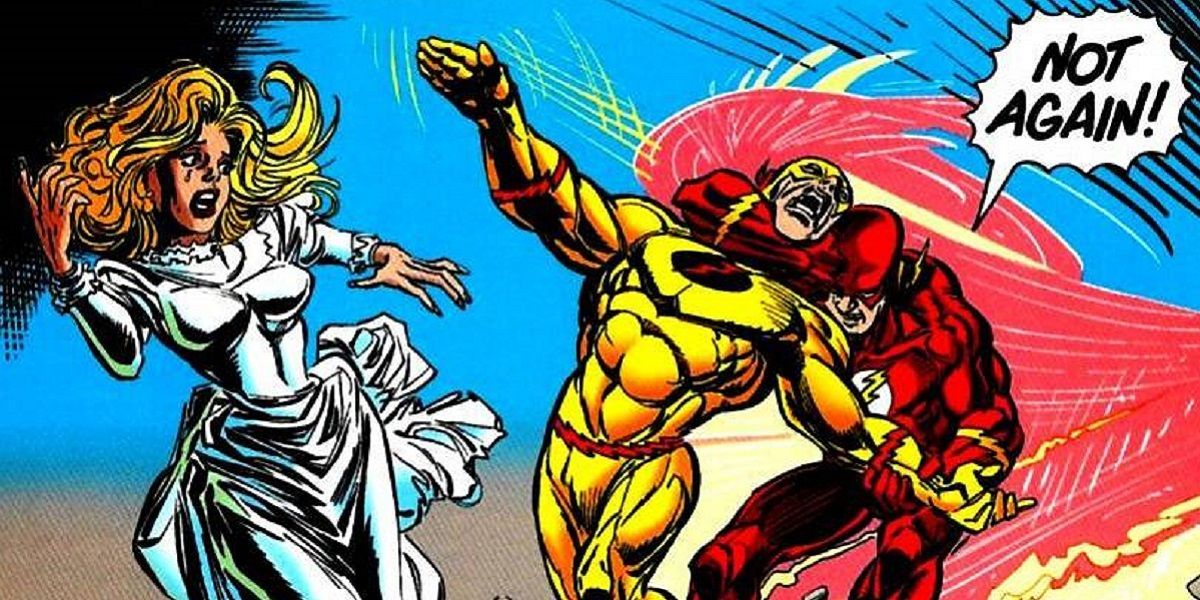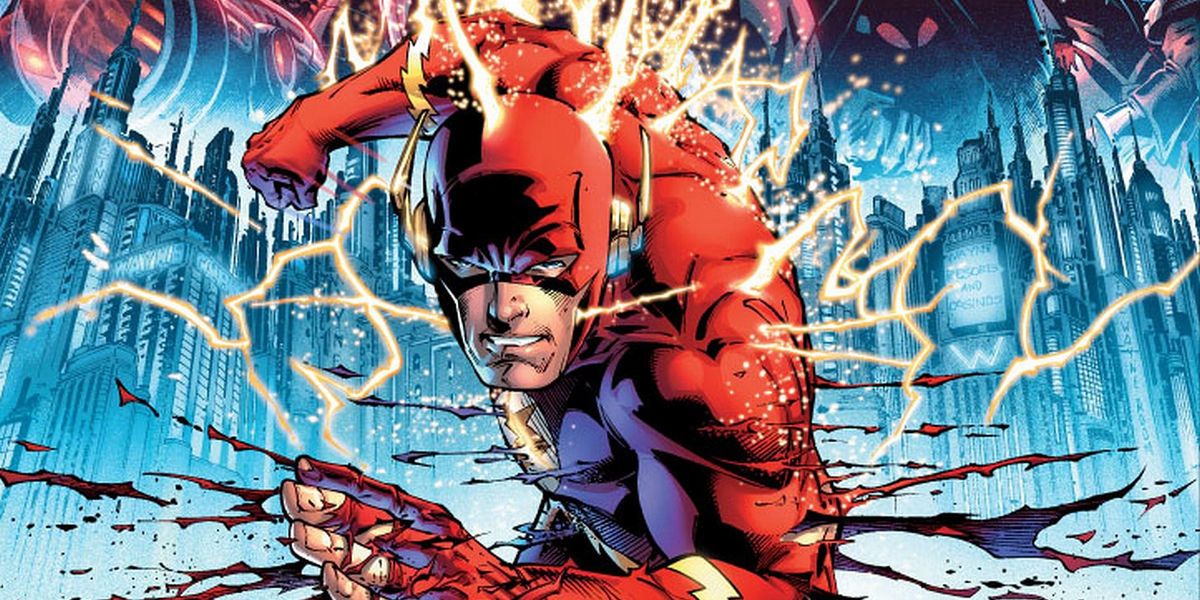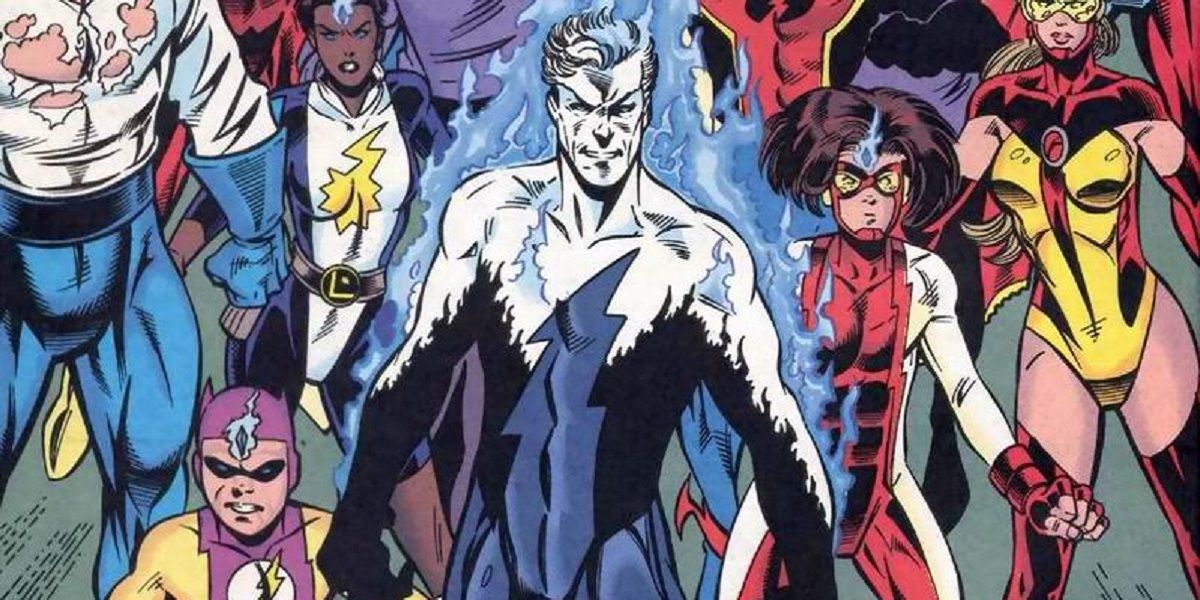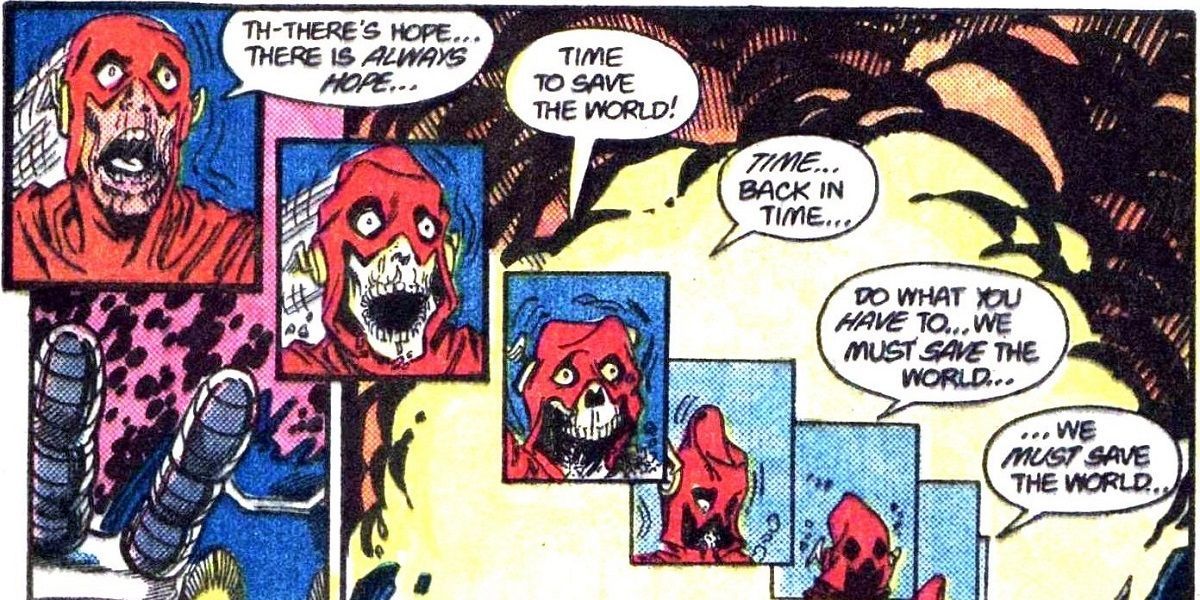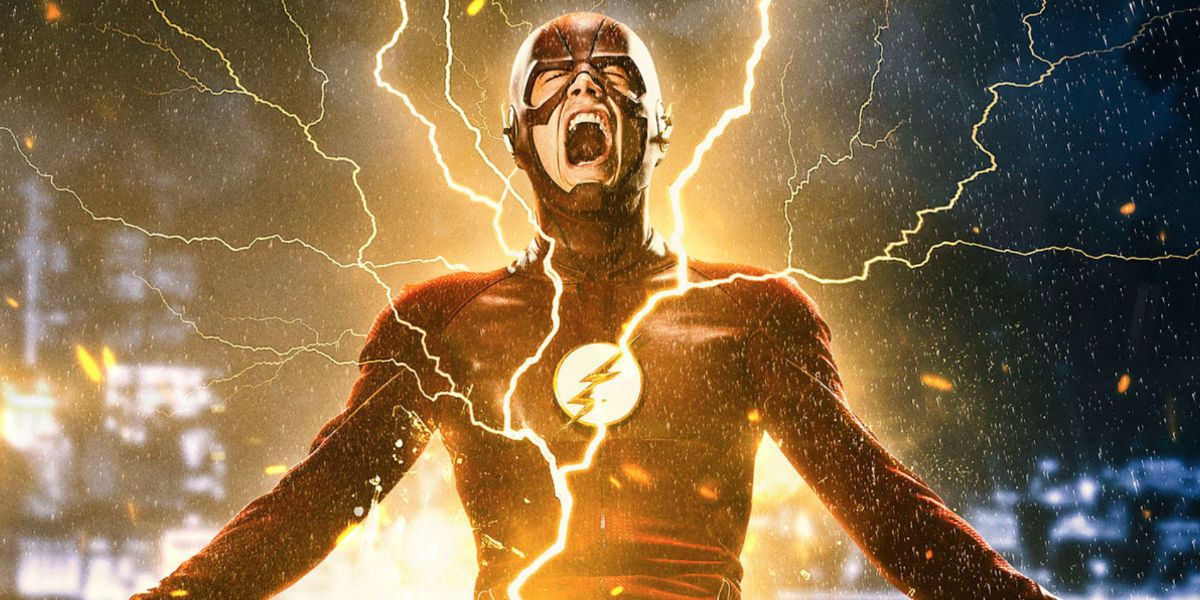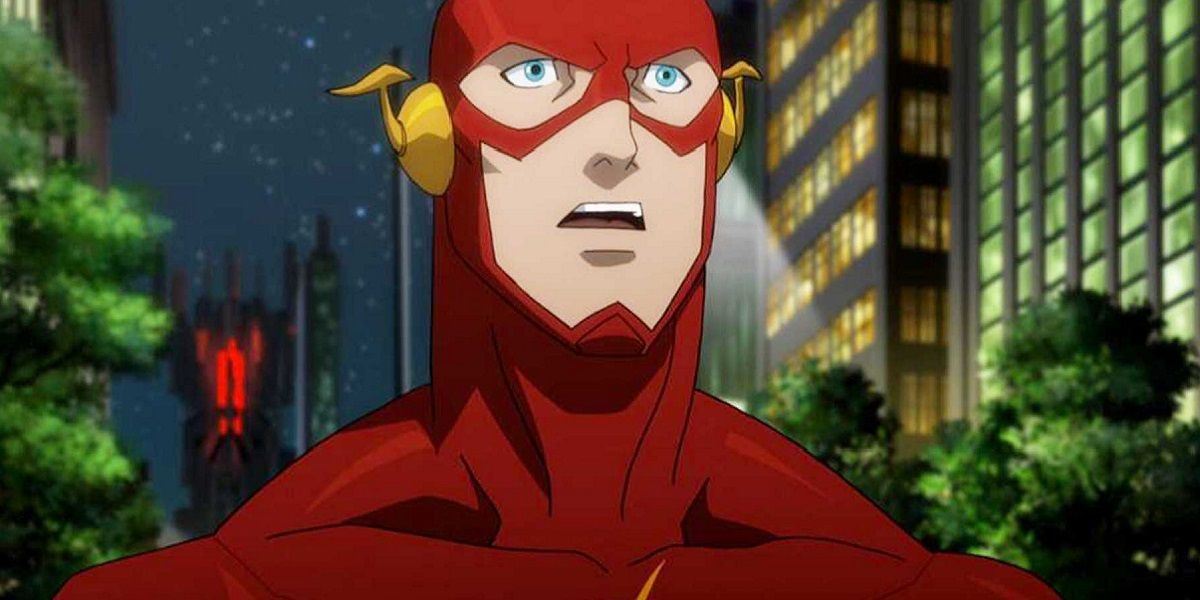You'd be hard-pressed to find anyone who would argue against the notion that the Flash is one of the greatest comic book characters ever conceived. A fan-favorite amongst DC Comics' impressive pantheon of heroes, the Flash has proven time and again that he's more than just a guy with superspeed. Nearly eight decades after he was first introduced to audiences, he's as relevant now as he's ever been.
The Flash's enduring hyper-popularity can be attributed to a number of factors - though his sleek design and engaging personality are certainly major selling points. With a hit TV series on The CW gearing up for season 2, and a film adaptation in the pipeline, it seems safe to say that the best is yet to come for this Justice Leaguer.
With the Season 2 premiere of The Flash just around the corner, let's take a look at the 12 Things You Need to Know About the Flash.
2015 marks Flash's 75th anniversary
Jay Garrick, the original Flash, made his comic book debut in January of 1940, in Flash Comics #1. Created by writer Gardner Fox and artist Harry Lampert, Garrick was a college-aged victim of a freak laboratory accident that granted him the ability to run at superhuman speeds. The first Flash became a headlining character of what has come to be referred to as the Golden Age of Comics, an era that suffered a massive decline in popularity at the end of WWII. Flash Comics was eventually canceled in 1949.
When DC Comics successfully revived the genre and ushered in the Silver Age of Comics in 1956, they did so by introducing audiences to brand new characters, and a police scientist (later a forensic scientist) by the name of Barry Allen took up the Flash mantle, after yet another laboratory accident. The success of the new Scarlet Speedster is widely credited with kicking off this new comic age, and Allen's Flash has come to be known as the definitive version of the character.
There have been 4 principal, in-canon Flashes
Jay Garrick was the first Flash, and Barry Allen is probably the most well-known, but they're far from the only characters to have held the title of the fastest man alive. Barry's nephew Wally West has a huge following of his own, thanks in no small part to his starring role in the Justice League animated series that ran in the early '00s. In fact, West was ranked 8th by IGN on their list of the "Top 100 Superheroes of All Time," a full 41 spots ahead of his uncle. Wally was the first Kid Flash, serving as Barry Allen's protégé for over 25 years before becoming the third Flash in 1986, after Barry's death.
For a few years, West had his own Kid Flash in Bart Allen, originally conceived as a time-traveling member of the Allen lineage from the 30th century that also happened to be Barry's grandson (don't ask). After West seemingly bit the dust in Infinite Crisis (2005-2006), Bart took on the Flash mantle, but his run on the character was short-lived. Bart himself was killed in action just over a year after becoming the Flash.
Wally and Jay are both set to appear alongside Barry Allen in the upcoming season of The Flash. No word yet on Bart, but fans are likely more than satisfied with the idea of three speedsters roaming Central City.
Others have held the title... for awhile
Though the previously mentioned characters are known as the four true Flashes in comic history, several others have taken on the identity for themselves at one point or another. The most prominent of these characters is probably Jesse Chambers, Wally West's former partner. Better known as Jesse Quick, Chambers briefly served as the Flash following Wally's Infinite Crisis debacle before Bart Allen replaced her. Like her comic book colleague, Quick will also appear in the upcoming season of The Flash.
The Flash has proven to be a lasting character in DC's timeline, with each generation seemingly having their own version of the Crimson Comet. John Fox of the 27th century was granted superspeed before becoming the Flash and winding up as a Justice Leaguer of the 853rd century. Several distant relatives of Barry Allen have served as the Flash in their time, including Sela Allen (23rd century) and Blaine Allen (28th century).
Several alternate-Earth versions of the Flash have been shown to exist as well, including Iris West II, Danica Williams and Tanaka Rei. Though DC's New 52 reboot made an honorable attempt at cleaning up and simplifying the hyper-convolution that surrounds the character's history, there's still no shortage of speedsters in the DC multiverse.
He's earned his "Fastest Man Alive" title
In the intro sequence for The CW show, Grant Gustin's Barry Allen calls himself "the fastest man alive," a designation that he's defended on multiple occasions. The Flash has raced Superman several times in the comics, without ever having lost to the Man of Steel. Arguably DC's two speediest heroes, the two first squared off in Superman #199 (1967) in a charitable race that ended in a tie. After a handful of controversial showdowns over the years (all of which Barry Allen either won or tied) the two once again lined up against one another in the third issue of The Flash: Rebirth (2009). Barry easily wins the contest, after revealing that he'd been holding back his true speed in their previous encounters. Wally West has also outrun Superman, edging out Clark Kent's alter-ego in 1990's Adventures of Superman #463.
As for the fastest Flash, well, that's usually a question of who the star of the show is. A consistent, reliable ranking system doesn't exactly exist, and different writers have depicted the Flashes as possessing varying speed capabilities. But if you're reading a series in which Barry Allen is the Flash, he'll more than likely end up becoming the fastest man who ever lived, and the same goes for Jay Garrick, Wally West, and Bart Allen. Fans typically duke it out between Barry and Wally, but it's impossible to say for sure who the fastest truly, definitively, is.
There may not be a limit to his speed
The Flash is a hero that's all about overcoming obstacles and smashing through perceived barriers. Previously conceived notions of physics and the limitations of the human body are consistently thrown out the window when this guy comes speeding into town. Previous iterations of the character were a bit more toned down in terms of abilities, but more recent depictions have shown the Flash to be capable of easily outrunning the speed of light—which is over 670 million mph, for everyone keeping track at home. Flash rarely pushes himself past Mach 10, however, because of the resulting damage to the surrounding environment.
The speedsters of DC are able to achieve such feats through the use of the Speed Force, an energy field of sorts that grants the Flash (and a select few others) these extraordinary abilities. This vaguely defined and largely unseen force is often depicted as the primary unit of measure by which velocity is measured in the DC universe. All five known barriers (Sound, Light, Time, Dimensional, and even an actual Speed Force Barrier) have been surpassed by the Flash at one point or another. These barriers have come to mean very little over time, as it seems the Flash's capabilities are limited only by his imagination.
The Flash has a variety of other abilities
Super speed may be the ability that has come to define the Flash, but it's just one of the powers the Speed Force has granted him. Various incarnations of the character have demonstrated control over their muscular density and molecular structure. This allows the Flash to achieve intangibility, making him capable of vibrating through solid objects at will. In addition to your standard superhuman powers—like enhanced strength, durability, and healing—the Flash also possesses an incredibly sharp mind. He once told Superman that he "can think at the speed of light," and "perceive events that last for less than an attosecond."
Other abilities, like the Infinite Mass Punch (which has been described as having the mass of "a white dwarf star") and the power to share and steal the Speed Force with/from others are also in the Flash's repertoire.
Not all of the Flash's skills are owed to the Speed Force, however. All four of the Flashes are seasoned crime fighters, and Barry Allen is a top-notch forensics expect for the Central City Police Department, a position he held long before he gained his superpowers. Barry has also been described as a brilliant chemist, and Wally West is something of a science prodigy himself. Expect these character traits to play a role in season two of The Flash.
The Rogues
You probably saw this one coming. The bad guys that call Central City their home first teamed up to defeat the Flash way back in 1965, and have since established themselves as one of the most dangerous supervillain teams in comics. On their own, the Rogues can (at times) come off as gimmicky and non-threatening. But the combined efforts of the likes of Captain Cold, Mirror Master and Captain Boomerang have resulted in a highly formidable group of foes, one that's plagued the Flash for years.
One distinguishing feature of the Rogues is their strict moral code, a set of rules that every member of the team must adhere to. They have no desire to take over the world, and most iterations don't even seek to kill their arch-nemesis; they're completely content with robbing banks and causing non-fatal mayhem. The Rogues only kill when they absolutely have to, and they even have a drug policy.
They've certainly done their share of damage in the DC universe though, notably in the final issue of the 2007 arc, The Flash: The Fastest Man Alive. In it, several members of the Rogues, along with relative newcomer Inertia, actually killed Bart Allen, who had only recently strapped on the red tights. Despite this, their wickedness pales in comparison to another Flash villain...
Barry Allen once killed the Reverse-Flash
Judging by everything we've seen regarding season two of The Flash, it would appear that the show intends to make the Reverse-Flash and Professor Zoom (or Zoom, at least) two separate, villainous speedsters. In the comics, however, the most well-known iterations of these characters are alter-egos of the same man: Eobard Thawne. Barry Allen's time-traveling archenemy from the 25th century has tormented him since the character debuted in The Flash #139 (1963). Thawne's probably best known for killing Allen's wife, Iris West, in The Flash #275 (1979), a murder that haunted Barry for years. But four years later, when the Reverse-Flash attempts to kill a now-recuperated Barry's bride-to-be, Fiona Webb, the Flash inadvertently snaps Thawne's neck, killing him instantly.
Like any comic book death, however, Thawne didn't stay dead. After years of sporadic appearances, Professor Zoom was brought back to life for good by Geoff Johns in The Flash: Rebirth, where the villain revealed that he was behind everything bad thing that had ever happened to Allen, including the death of his mother, Nora. He has since become one of the most prominent villains of the DC universe.
The reality-breaking story arc Flashpoint directly led to DC's New 52 reboot
Speaking of the Reverse-Flash, Eobard Thawne served as the principal antagonist for the ground-breaking 2011 series, Flashpoint. The crossover event saw Barry Allen wake up one day to a radically different world, one where the Flash had never existed. In this reality, Thomas Wayne is Batman, Wonder Woman and Aquaman are at war with one another, and Cyborg is the world's greatest hero. It is later revealed that this alternate universe, and the apocalyptic threats surrounding it, is the result of Barry traveling back in time to save his mother from Thawne.
At the conclusion of Flashpoint, the Flash races back in time in order to undo his actions and bring back the reality (and life) he knew and loved. In doing so, he actually merges together three separate, existing realities (the world he knew, as well as the worlds of Vertigo and Wildstorm comics—to create yet another reality, which is then fleshed out in DC's New 52 revamping.
For years, DC Comics had wanted a clean slate for their heroes to live within, as the convoluted histories of their characters were becoming increasingly difficult to adhere to. Who better to reset an entire universe (with as little controversy as possible) than the Flash, one of DC's most popular characters?
Barry Allen's long-lost twin brother is supervillain Cobalt Blue
Malcolm Thawne made his first appearance in 1997, in Speed Force #1. The story revealed that Charlene Thawne and Nora Allen came into a doctor's office on the same night to deliver children, with the latter pregnant with twins. The drunken doctor mishandled Thawne's delivery, killing the child. He inexplicably decided to give one of the Allen twins to the Thawnes, convincing Nora and her husband that their other boy was a stillborn. Years later, jealous of the happy life Barry has led (the one he was deprived of), Malcolm gains control of a magical blue flame that grants him the ability to create fiery constructs and steal energy from others. He inevitably uses these gifts in an attempt to exact revenge on his long-lost brother, taking on the supervillain identity, Cobalt Blue.
Thawne hasn't been seen in years, and has yet to appear in the New 52. In an interview last year with Comic Book Resources, however, The Flash co-star Rick Cosnett made a direct reference to the character when asked about the Allen/Thawne family feud, eluding to the likelihood of a Cobalt Blue appearance somewhere down the line:
It was fascinating to me, and I think the family lineage -- they're quite wealthy and they're from this old money world of deep, deep dark secrets. It's also fascinating with the whole Barry's twin [storyline], and who that is and who it's going to become.
Though Cosnett's Eddie Thawne was killed off in the season one finale, fans have theorized that he will return as Cobalt Blue—rumors that were reignited by recent season two promotional material.
Barry Allen died in Crisis on Infinite Earths, and stayed dead for over 20 years
DC Comics' first attempt to simplify their convoluted continuity, Crisis on Infinite Earths, was a massive crossover event that involved almost every significant hero (including those from alternate universes) in the publisher's character stable. Originally intended as a celebration of DC's 50th anniversary, the story line featured Barry Allen's capture by the world-destroying Anti-Monitor. The Flash was able to escape and help put a stop to the villain's plan to destroy the multiverse, saving billions of lives in the process. But in doing so, he absorbed too much energy for his physical form to maintain, and Barry Allen was no more. His nearly-thirty year run as the Flash came to a heroic end, and Wally West took up his mantle.
Again though, comic book deaths are rarely (if ever) permanent. Barry Allen made his full-time return in the pages of Grant Morrison's 2008 crossover, Final Crisis, where it was explained that he had merged with the Speed Force - and, later on, resurrected himself. Allen has maintained his position as the Flash in the years since, taking a headlining role in the New 52 reboot.
We'll be seeing a lot more of the Flash in the coming years
After their first DC adaptation Arrow proved to be a hit with critics and audiences alike, The CW took a huge risk by choosing to create a spin-off series centered around the world's fastest man. Initial concerns over budgetary issues and a convoluted character history thankfully proved to be unfounded, as The Flash has emerged as an even more popular show than its predecessor. Displaying a deft hand for storytelling—as well as boasting some of the best special effects on television—the network's latest hit is well on its way to cementing itself as one of the best live-action depictions of a superhero in recent memory. As Season 2 speeds towards its October 6th release date, there's no reason to suspect that the show will slow down anytime soon.
But in the very near future, The Flash will have some serious big-screen competition. Around this time last year, Warner Bros. announced plans to release a Flash film in 2018, with up-and-coming actor Ezra Miller set in the starring role. Very little in the way of additional information about the project has been provided, though we do know that the movie has already begun attracting top-tier talent. Diane Nelson, President of DC Entertainment, is on record as saying that the two mediums will be entirely separate from one another, so fans hoping to see a race between Miller and Grant Gustin would be wise to temper those expectations for now.
Although these two universes will not be connected in any way, Flash fans should be all smiles; we're in for a very interesting next few years.
Conclusion
The Flash may not receive the level of notoriety that other DC heroes command, but there's no getting around the fact that the character's public profile is about to get a whole lot bigger. This enduring figure appears primed to take his rightful place amongst the greatest (and most powerful) superheroes of all time, a long overdue designation that should have comic book fans everywhere geeking out in anticipation.
What's your favorite aspect of the Flash? Who has proven to be you favorite Scarlet Speedster? Is there enough room in the world for two live-action Flashes? Let us know in the comments below.
-
The Flash Season 1 is now available on Blu-ray Combo Pack, DVD and Digital HD. Season 2 premieres on The CW on Tuesday, October 6, 2015 at 8pm; The Flash will be in theaters on March 18, 2018.

